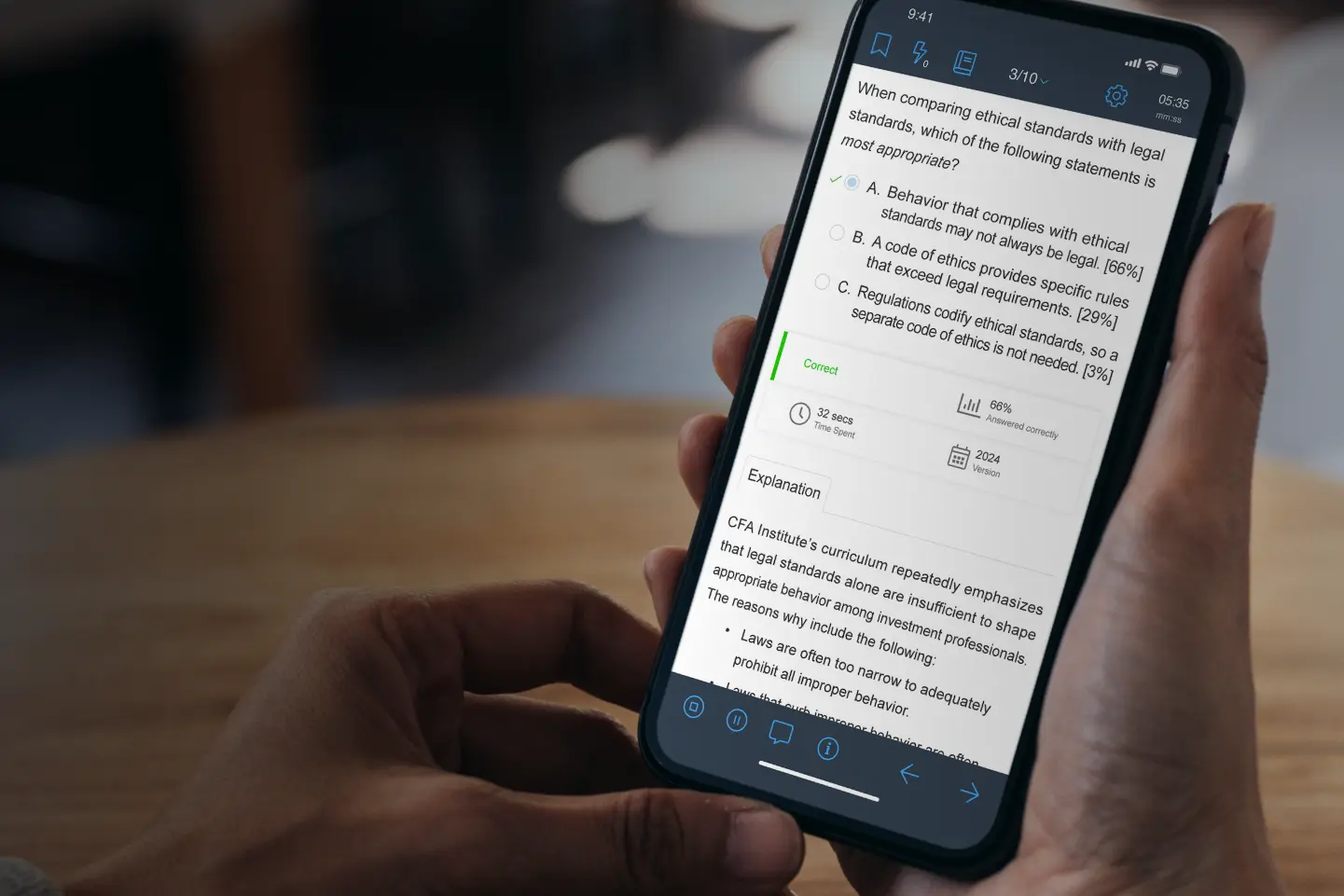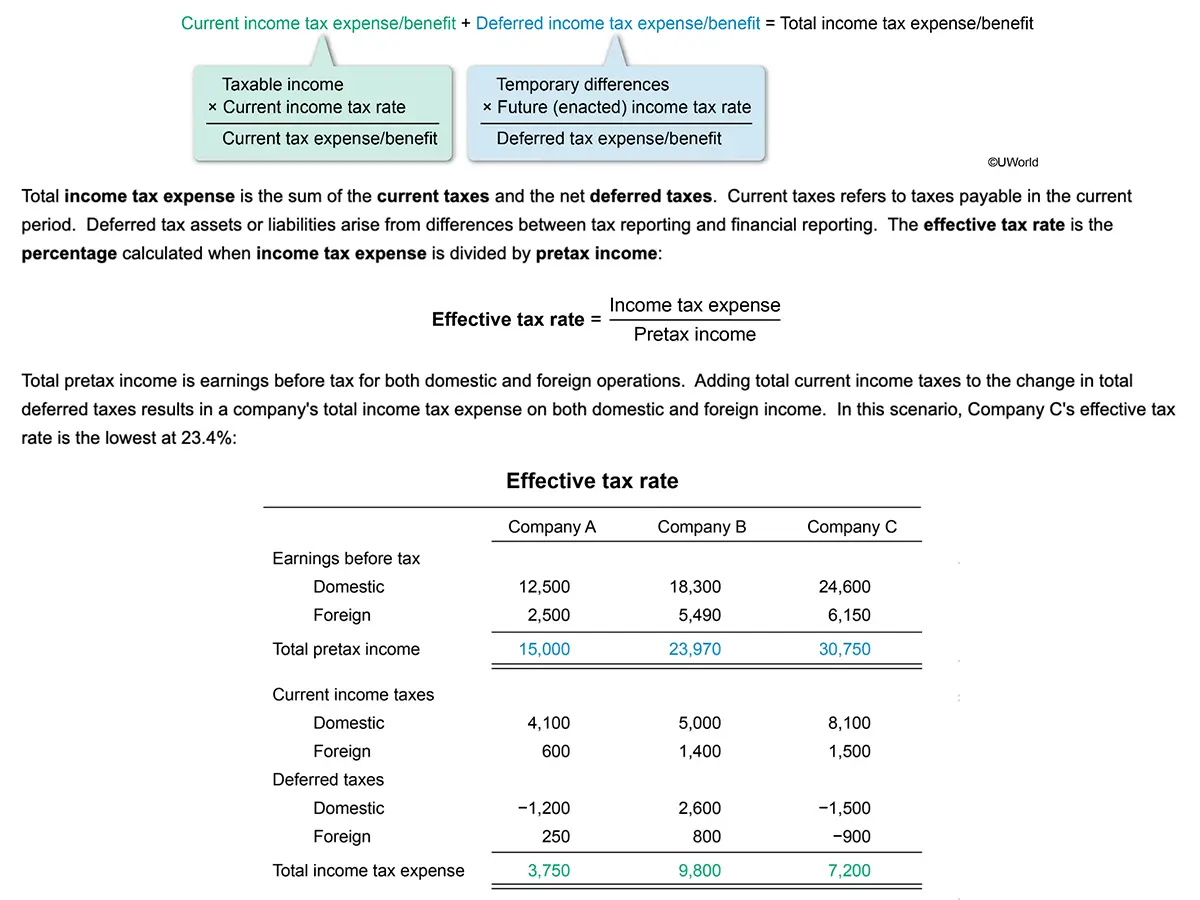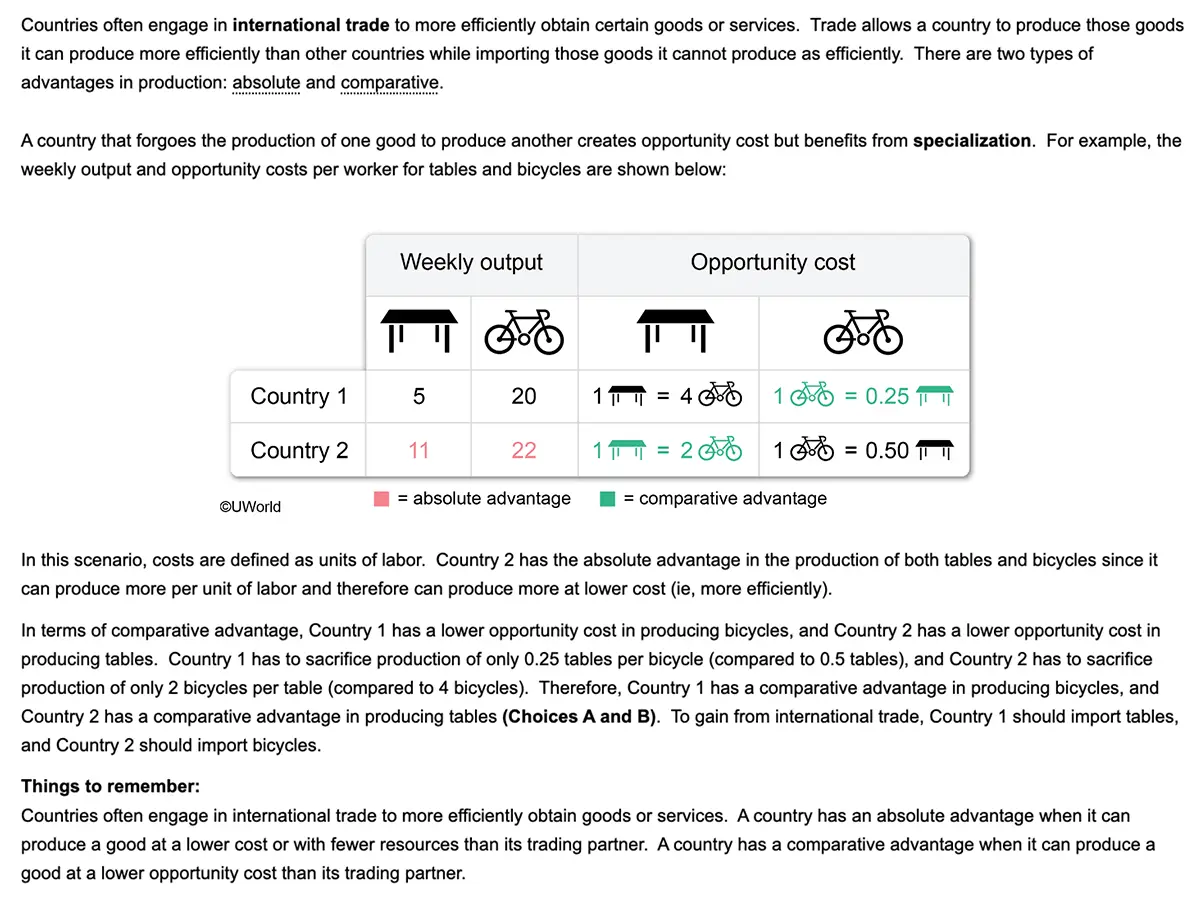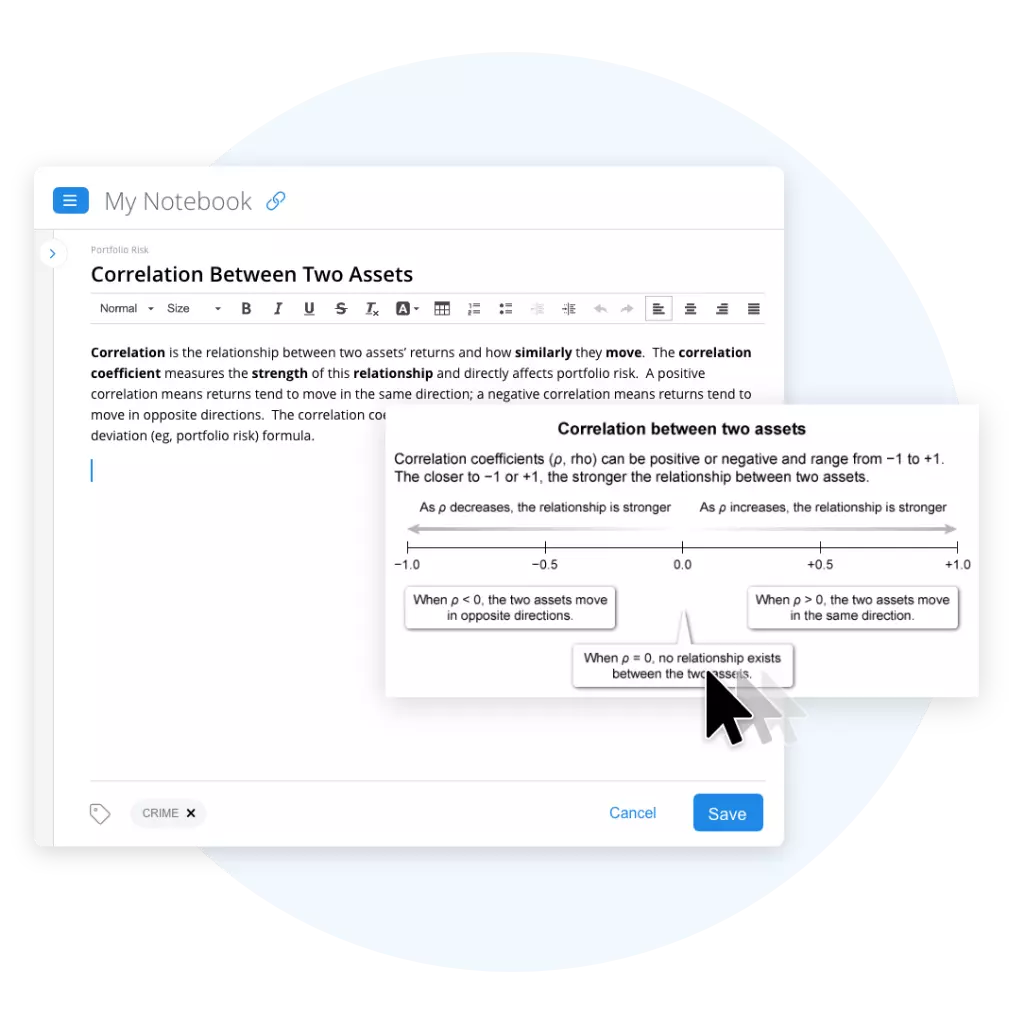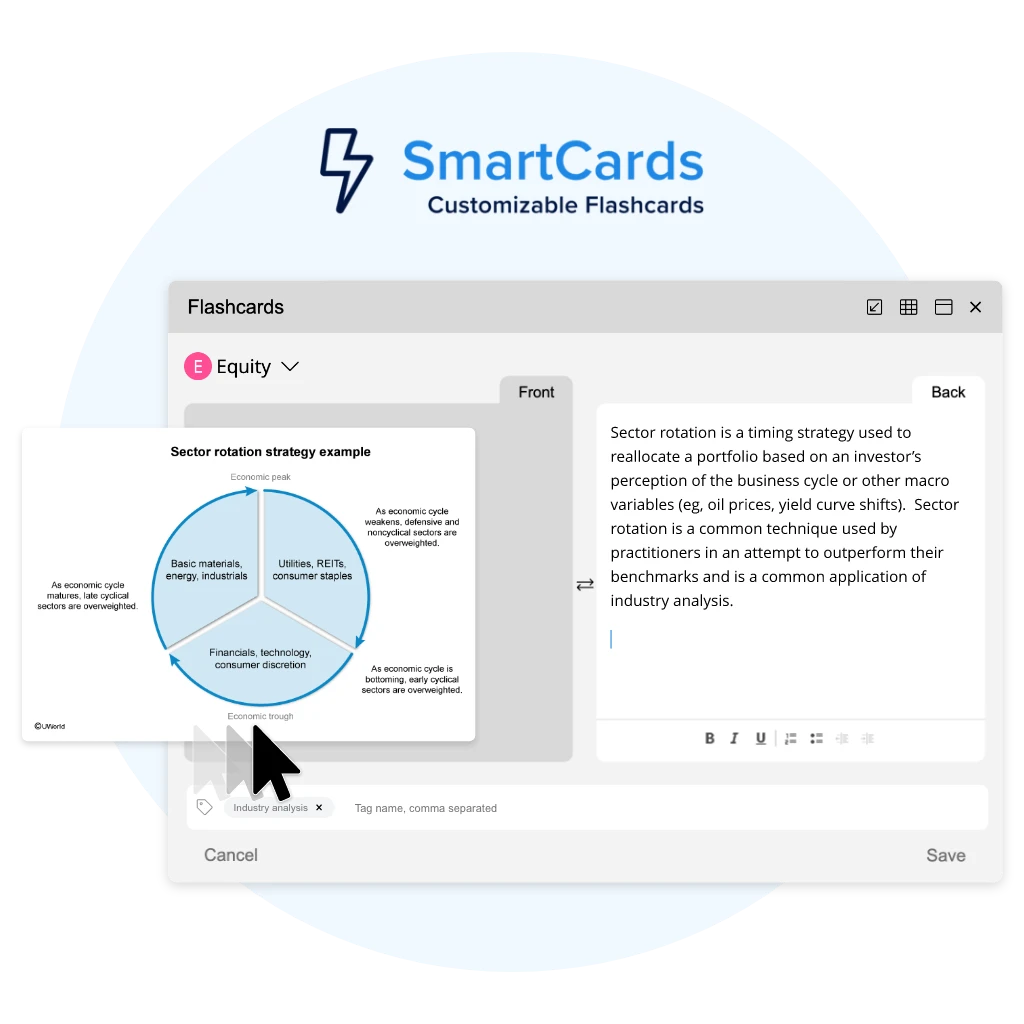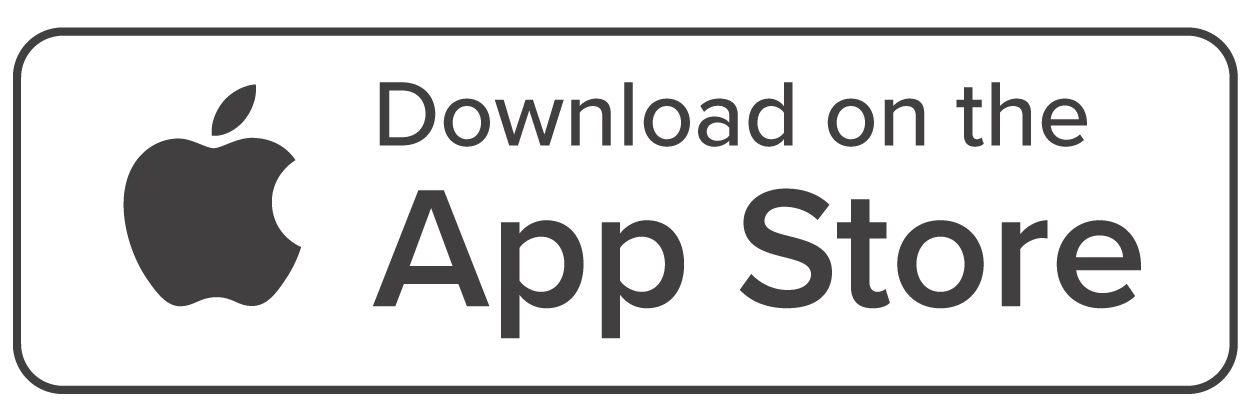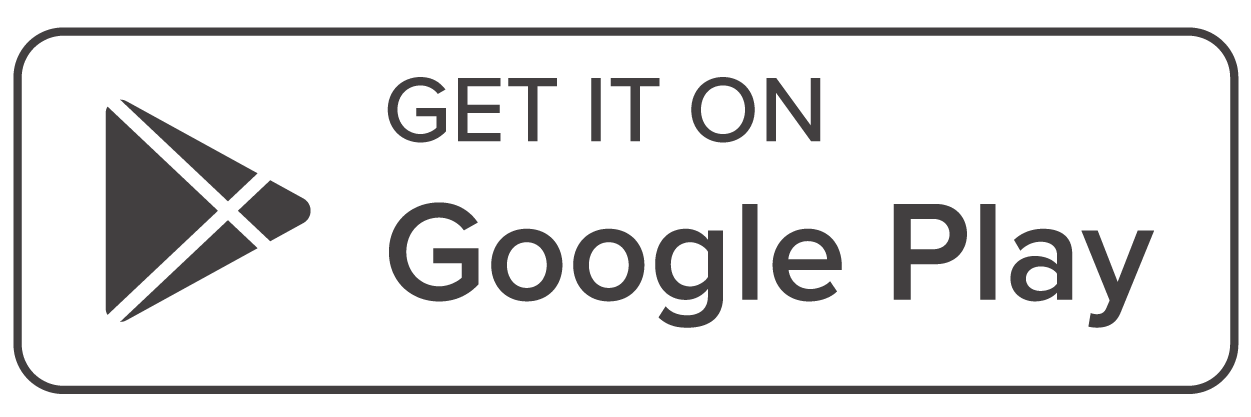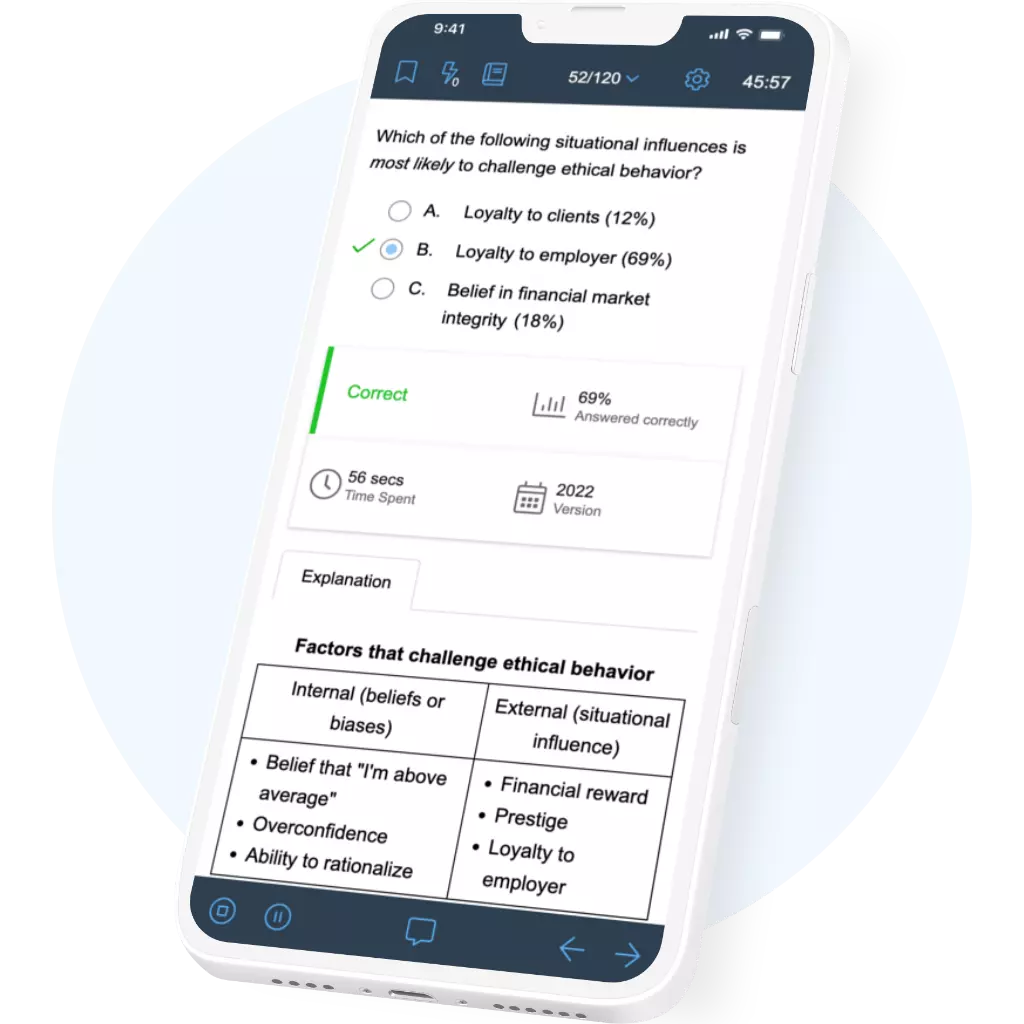CFA® Level 1 QBank
Make the Exam Feel Like Practice
and finance experts to meet or exceed exam-level difficulty.
Learn by Doing
Create Custom Quizzes
Understand the Why
Simulate Exam
Conditions
Turn Weaknesses into Strengths
Replicate the Exam Environment
Try Questions from Our #1 CFA Level 1 Exam Qbank.
Experience the Quality. Choose your answers and feel the UWorld difference.
Score Higher with Quality Learning Tools
Make Note Taking Digital
Increase Retention with Digital Flashcards
See What Our Students
Are Saying…
You can custom-make your own tests to target questions you have gotten wrong previously which is awesome. The simulated exam interface is also a super cool tool that I think will just be one less thing for me to worry about on exam day…"
Excellent explanation for each question. Application-based questions are very nuanced that further help strengthen the underlying topics. What I liked most, specifically about UWold’s QBank, is that unlike questions on other platforms which can be done as part of practice…"
I have tried Kaplan, CFA Ecosystem and I can tell you that you are the best. Great difficult questions, but the most worthy thing is explanation after question that gives a comprehensive revision of everything related to the topic in the given question…"
CFA Exam Success Starts Here.
Study Guides
Mock Exams
Best Value
Full Course
Explore our Free Trial and Product Availability
